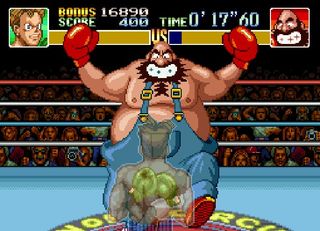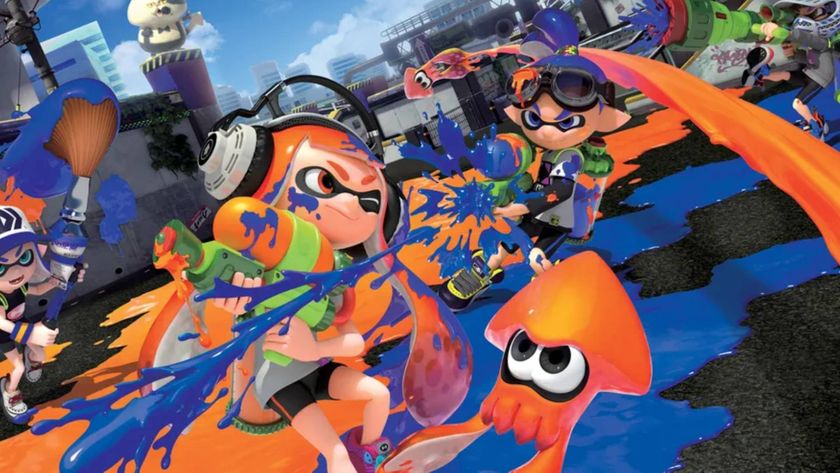The Top 7 Reasons the Super NES is Nintendos best console
20 years later, Nintendo’s second console still sits among the greatest
5 – The superior Sony sound chip
Above: Final Fantasy VI’s “Searching for Friends” remains one of the greatest pieces of game music ever
Long before Nintendo and Sony became console rivals, the two electronics giants teamed up to create a dedicated sound chip that would set the SNES apart from all its contemporaries. Even better, said chip (which was designed by future PlayStation head Ken Kutaragi) would lead to the creation of truly legendary works of art, songs that have stood the test of time and burrowed their way into millions of gamer minds across the globe. With the means now available, composers cut loose in a medium previously limited to decidedly “video-gamey” noises.
Above: Chrono Trigger’s “To Far Away Times” is one of my favorite songs, period
All those aforementioned JRPGs? Stunning soundtracks across the board. Their already impressive gameplay was bolstered by emotionally moving compositions that soared past chiptunes and MIDI; even with technically superior hardware, the PS1 and N64 didn’t measure up to the SNES when it came to timeless soundtracks, and even today we’d wager most games don’t produce music that will ring on for years after they’re collecting dust in the closet. From RPGs to racers to side scrollers to sports games, there are just too many outstanding soundtracks to name. Sure, there are countless notable game OSTs out there (the Genesis has its fare share too), but pound for pound the SNES wins out - maybe check out our game music of the day entries for more examples, hm?
4 – The gimmicks were put to good use

In the pursuit of new technology, developers can often lose sight of the game that’s buried underneath. In the case of the Super NES, Nintendo used its gimmicky bullet-point features to power several genuinely great games, and in the process created franchises that are still around today. While the tech is less impressive in 2011, the thought process behind it – using programming tricks for gameplay-specific purposes, not duping people into buying your system – is as important today as it ever was. Consider the Wii, which stormed out of the gate with motion control and Wii Sports. Months later, the impact faded and “Wii Waggle” was shunned by the same people who happily stood in cold November lines for Nintendo’s latest console.

Above: Star Fox looks downright primitive today, but the angular Arwing design has persisted since its blocky debut
The SNES, on the other hand, introduced new tech that led to real classics. Out first was “Mode 7,” a scaling and rotation trick that was inseparably woven into F-Zero, Pilotwings and Super Mario Kart; the feature not only made them visually distinct, but also gave them better senses of speed and space. The Super FX chip made the polygonal Star Fox a reality, and the FX2 chip gave Yoshi’s Island its adorable storybook looks and morphing bosses. Rare used computer modeling to give Donkey Kong Country and Killer Instinct their visual punch as well.
Sign up to the 12DOVE Newsletter
Weekly digests, tales from the communities you love, and more
We’re not saying modern developers put graphics ahead of gameplay, or that these SNES tricks failed to produce a bad game (Stunt Race FX comes to mind). But in the grand scheme of things, we love that in each instance of new SNES technology, Nintendo delivered a one-of-a-kind experience that, in most cases, resulted in something special.
3 – Nintendo perfected its formula

The NES era birthed Super Mario, Zelda, Metroid and many other iconic series that live on today, so it goes without saying that it too remains an important piece of gaming history. However, each of those series really came of age during the SNES days. It was a period of time in which Nintendo honed its craft to its sharpest point, fueling not just its own 3D games years later, but an entire generation of future developers who now look at “Nintendo magic” (that almost imperceptible excellence that Miyamoto snuck into his games) as a lofty goal to reach.

Above: Just about every Nintendo franchise that exists today experienced perfection on the SNES, B-listers included
Super Mario World expanded on Mario 3’s already big ideas, and added many of its own to boot. A Link to the Past took pieces of Zelda I and II, mixed them together with a genuine story, doubled the amount of content and poof, one of the greatest games of all time was created. Super Metroid significantly improved upon the already popular original, adding real tension and suspense to Samus’ claustrophobic journeys; Nintendo’s work on Super Metroid would eventually derail the entire Castlevania franchise (beginning with the equally brilliant but shamelessly cribbing Symphony of the Night) and eventually inspire chair to create Shadow Complex.
Whether everyone acknowledges it or not, all the modern 2D indie games, on some level, must equal or exceed gameplay defined by the SNES. For all Braid’s lofty ideas and Limbo’s stirring imagery, they still must live up to control and layout standards set in the ‘90s; if they don’t handle like a proper 2D side scroller, all that other fluff goes right out the window. Those two indie gems, along with Splosion Man, Super Meat Boy, the newly announced Cobalt and many more XBLA/PSN games happily promoted as “old-school,” all owe (and pay respect to) the glory days of the SNES
A fomer Executive Editor at GamesRadar, Brett also contributed content to many other Future gaming publications including Nintendo Power, PC Gamer and Official Xbox Magazine. Brett has worked at Capcom in several senior roles, is an experienced podcaster, and now works as a Senior Manager of Content Communications at PlayStation SIE.

















